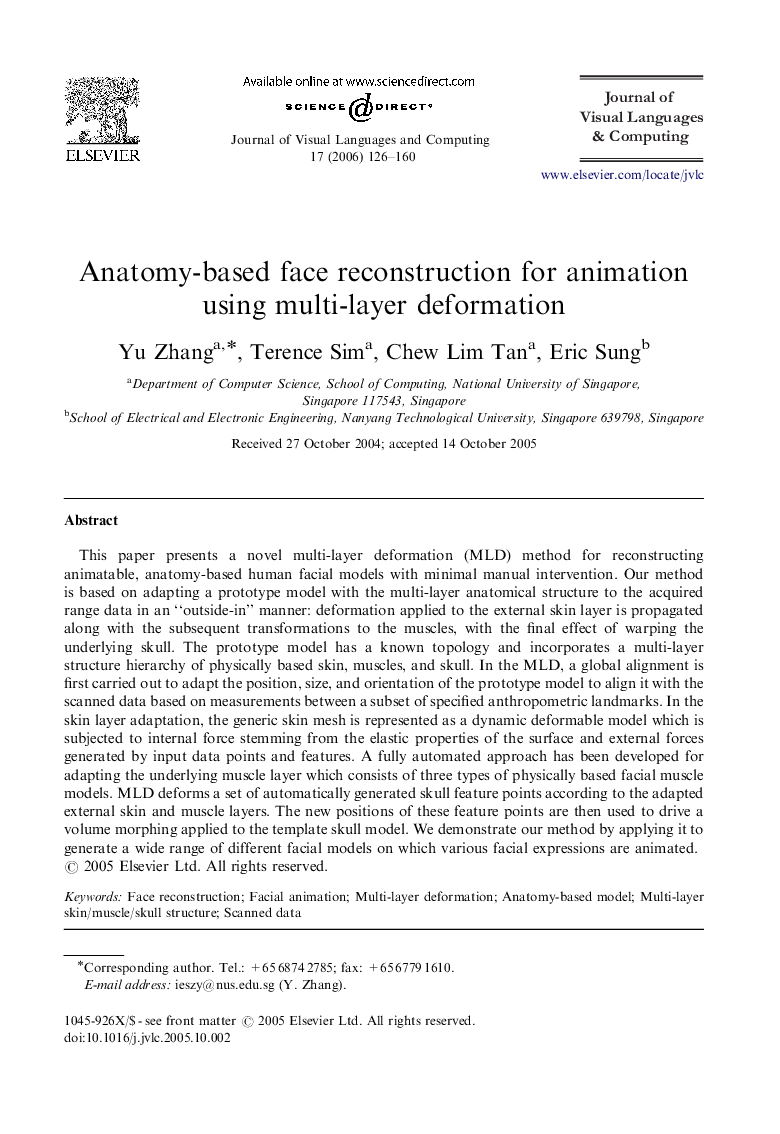| Article ID | Journal | Published Year | Pages | File Type |
|---|---|---|---|---|
| 523698 | Journal of Visual Languages & Computing | 2006 | 35 Pages |
This paper presents a novel multi-layer deformation (MLD) method for reconstructing animatable, anatomy-based human facial models with minimal manual intervention. Our method is based on adapting a prototype model with the multi-layer anatomical structure to the acquired range data in an “outside-in” manner: deformation applied to the external skin layer is propagated along with the subsequent transformations to the muscles, with the final effect of warping the underlying skull. The prototype model has a known topology and incorporates a multi-layer structure hierarchy of physically based skin, muscles, and skull. In the MLD, a global alignment is first carried out to adapt the position, size, and orientation of the prototype model to align it with the scanned data based on measurements between a subset of specified anthropometric landmarks. In the skin layer adaptation, the generic skin mesh is represented as a dynamic deformable model which is subjected to internal force stemming from the elastic properties of the surface and external forces generated by input data points and features. A fully automated approach has been developed for adapting the underlying muscle layer which consists of three types of physically based facial muscle models. MLD deforms a set of automatically generated skull feature points according to the adapted external skin and muscle layers. The new positions of these feature points are then used to drive a volume morphing applied to the template skull model. We demonstrate our method by applying it to generate a wide range of different facial models on which various facial expressions are animated.
